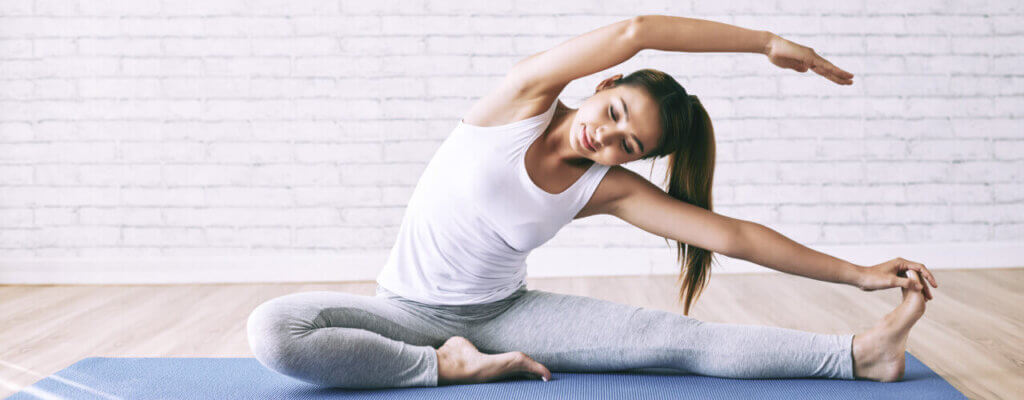Add Targeted Stretches to Your Physical Therapy Treatment Plan Today!
You’ve probably heard that stretching is essential before and after a workout or any strenuous physical activity. While this is true, stretching on a regular basis is also beneficial whether or not you do any type of physical workout.
As stated by Choose PT, “Maintaining your body’s flexibility is important. To keep your muscles flexible, avoid sitting for long periods of time, and stretch regularly.”
Stretching on a regular basis has numerous advantages. A physical therapy program tailored to your specific needs can assist you in getting the most out of your stretching routine.
Call our office to discover how a physical therapist can assist you in learning how to stretch effectively, in order to improve your health and increase your physical activity!
1. Stress relief
Of all the benefits stretching provides, many people may not realize that it can reduce stress. When you’re stressed and tense, your muscles naturally tighten. Gentle stretching can slowly relieve tension throughout your entire body.
Each of us have particular areas we carry a lot of tension. For some people, it’s in the neck area. For others it may be in the shoulders or in different areas of the back. A physical therapist can teach you exercises that target the specific area where you have the greatest tension and stress.
There are specific types of stretching, such as static stretching, that may be included in your physical therapy routine to reduce stress and anxiety.
2. Postural improvement
Stretching muscles can help improve posture. Poor posture looks unattractive and may even affect a person’s health. Good posture can reduce back pain and eliminate tension in your neck and shoulders.
If you’re sitting and standing correctly, this may even increase lung capacity and improve digestion. Physical therapy is a great way to improve your posture. A physical therapist can teach you new ways of standing, sitting, and engaging in daily activities.
A physical therapy program might include specific stretches to strengthen the spine, which can help improve posture.
3. Injury prevention
When your muscles are warmed up correctly, you’ll be less likely to suffer an injury during physical activity. Stretching increases flexibility, which makes muscles more supple. They are then less vulnerable to injury if you move quickly or suddenly change the direction of movement.
If you’re already suffering from injuries, a physical therapy routine can help you heal faster and get back to the activities you love. Physical therapy may even reduce the chance for future injuries. A physical therapist can use manual massage to heal current injuries, reduce pain, and strengthen muscles and joints.
4. Athletic performance improvement
Stretching before participating in athletics can help prepare your muscles and ligaments for strenuous physical activity. Stretching causes your muscles to continually lengthen and then relax again.
This prepares your body to more effectively engage in strenuous motions in which muscles are constantly contracting and lengthening. You’ll want to ask a physical therapist about stretches and exercises that are geared for the particular sport you participate in.
A physical therapy program with stretches to help with the specific movement you make in your sport can improve your athletic performance.
5. Range of motion improvement
Range of motion is basically how much movement you have around specific joints or certain body parts.
The greater the range of motion is for your knees, ankles, shoulders, etc., the more activities you’ll be able to do. Range of motion is particularly important for athletes or even those participating in athletic events for fun.
A physical therapist can measure the range of motion throughout your body and give you specific exercises to increase your overall ability to move as much as possible. Your physical therapy routine might include what is called dynamic stretching or the use of foam rolling to increase your range of motion.
It’s important to visit a physical therapist in order to learn how to use different types of equipment, such as foam rollers, correctly.
6. Flexibility improvement
Remaining flexible is a crucial aspect of staying mobile and active for as long as possible. Even younger individuals can lose flexibility if they don’t stretch and stay active on a regular basis. When you stretch regularly, your muscles become more supple and move with greater ease and less pain.
Greater flexibility will therefore not only make it easier to move, but when it’s easier it will take less energy. When you make stretching a regular part of your day, you may have more energy and not feel tired so quickly.
A physical therapy routine can be a great way to increase your flexibility. A physical therapist can show you how to stretch so you increase your flexibility in a safe and steady manner.
7. Blood flow improvement
Stretching may increase your circulation, which can ultimately improve blood flow. Improving overall blood flow has many benefits. This includes less soreness from workouts or even basic daily movement.
It also includes the ability to more efficiently deliver nutrients to not only muscles, but organs such as the heart. It can even increase your oxygen levels. Improved blood flow gives you more energy throughout the day and may even help the body fight off disease.
A physical therapy plan can teach you different ways to stretch that will most effectively increase blood flow. A physical therapist may also use heat treatment to improve blood flow while teaching you how to perform stretches correctly.
Contact us to learn more
Stretching can greatly benefit anyone who makes it a regular part of their routine.
Physical therapy is an excellent way to learn how to stretch correctly and safely – not to mention that physical therapy can help you improve your life, whether you want to improve athletic performance, reduce pain, or engage in day-to-day activities more easily.
Contact our office today to find out how a physical therapist can help you improve your flexibility and strength through stretching!


